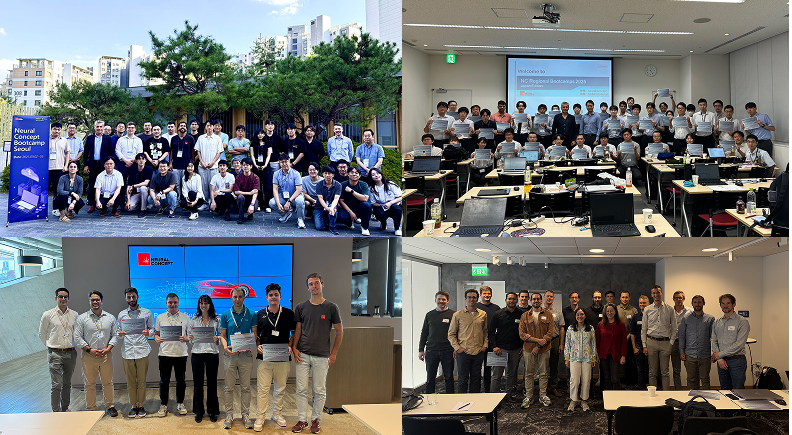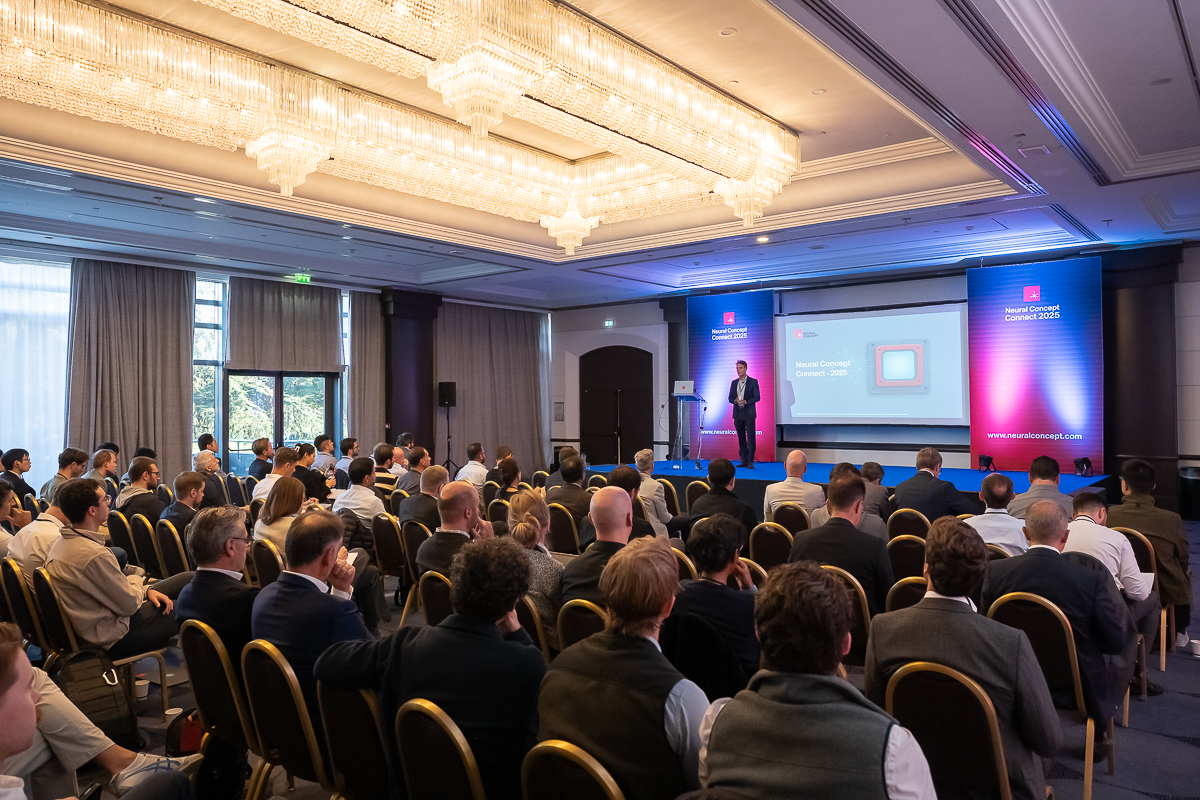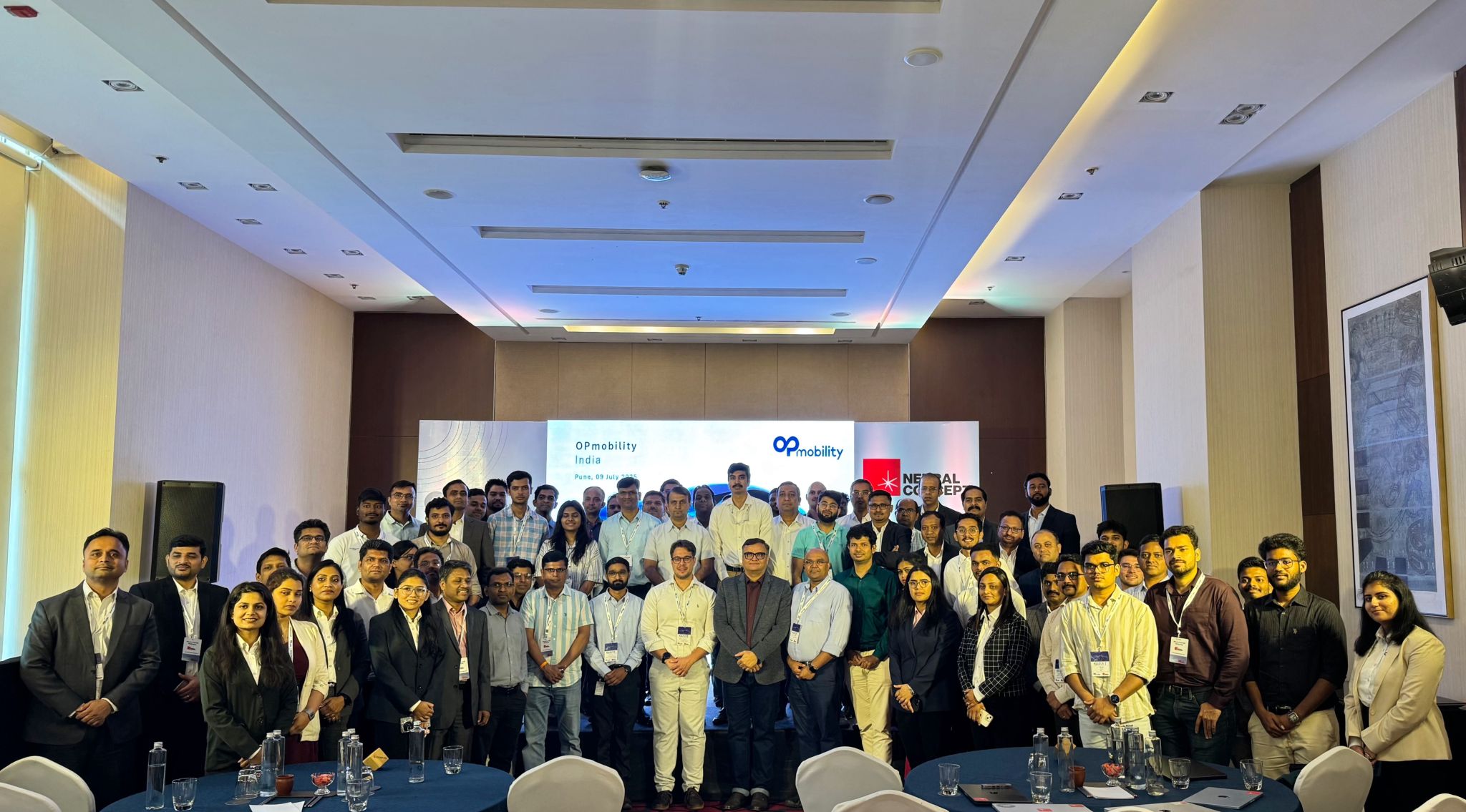Predictive Maintenance Machine Learning: A Practical Guide
%20(1).jpg)
- Predictive maintenance (PDM) utilizes advanced technologies such as machine learning and statistical models to analyze sensor and historical data, enabling the forecasting of when specific components are likely to fail.
- Instead of servicing equipment on fixed intervals or after breakdowns, it schedules interventions only when measurable indicators foresee degradation.
- This approach combines continuous monitoring of operating conditions with the estimation of failure probability.
- Predictive maintenance allows organizations to plan repairs with precision, avoid unnecessary part replacements, and minimize unexpected stoppages.
This is an organized guide to understanding, implementing, and leveraging predictive maintenance and various maintenance strategies, including Artificial Intelligence across industrial applications:
- How Do Preventive Maintenance Strategies Work?
- Benefits of Predictive Maintenance
- Examples from the Industry
- General Benefits of Predictive Maintenance
- Data Analytics for Predictive Maintenance - Key Applications
- Maintenance, Data Collection, and Elaboration
- 1. Maintenance and Operational Context
- 2. Data Collection
- 3. Data Processing and Modeling
- What is Machine Learning?
- Key Applications of Machine Learning in Predictive Maintenance
- Deploying Machine Learning for Predictive Maintenance
- How Does AI Learn?
- Equipment Reliability and Predictive Maintenance
- Predictive Maintenance and Equipment Failure
- Choosing the Right Strategy - Preventive Maintenance or Predictive Maintenance?
- What is the Role of Data Scientists in Predictive Maintenance?
- The Role of Data Scientists in Collecting and Managing Information
- Data Quality and Predictive Maintenance Programs
- Implementation of Predictive Maintenance
- Preventative Maintenance
- What are the Three Approaches to Maintenance Management?
- Best Practices for Predictive Maintenance
- Examples of Artificial Intelligence in Predictive Maintenance
- Example (1): Logistics and Fleet Management
- Predicting Component Failures
- Example (2) - Energy Grids and the Role of Predictive Maintenance AI
- Preventing Unplanned Outages
How Do Preventive Maintenance Strategies Work?
Preventive maintenance strategies work by continuously monitoring equipment, analyzing both historical and real-time data, and performing maintenance tasks before failures occur, thereby reducing downtime, extending asset life, and lowering repair costs.
Here is a more detailed explanation of how preventive maintenance strategies work:
- Collecting Data:
- Sensors track parameters such as temperature, vibration, pressure, power draw, acoustic signals, and lubrication quality. In some industries (aviation, oil & gas), high-frequency sampling allows detection of micro-cracks or bearing wear long before they cause failures.
- Machine Learning Models:
- Historical logs (including failures, repairs, operating hours, and ambient conditions), are integrated with physics-based features such as vibration spectra or thermal profiles. The algorithms used vary from regression and anomaly detection to neural networks, depending on the complexity of the equipment analyzed.
- Modern AI-powered predictive maintenance systems combine historical logs with sensor data to forecast failures more accurately, ensuring maintenance tasks are triggered by real degradation rather than arbitrary schedules.
- Real-time Monitoring:
- Models ingest live data streams and compare them against learned baselines. For example, a rise in vibration harmonics or an unexpected temperature drift may indicate misalignment, imbalance, or early bearing fatigue. Predictive maintenance is increasingly integrated with IoT and edge computing, where IoT devices continuously stream data and edge systems filter and analyze it locally to reduce latency and enable faster, more accurate alerts.
- Proactive Maintenance:
- When degradation surpasses a certain probability threshold, the system creates a maintenance ticket with an estimated failure time. This enables parts to be ordered upfront, downtime to be scheduled during low-demand periods, and repairs to be carried out before additional damage happens.
Whether dealing with conveyor belts, leaking pipes, or other equipment, wear and breakage require fixing or replacing.
Failure often isn’t fatal, but it lacks proactive detection. The article examines how Artificial Intelligence (AI) and Machine Learning can enable predictive maintenance, thereby preventing costly or catastrophic failures.
We will examine how AI tools, from basic predictive methods to advanced algorithms, can transform maintenance practices by providing actionable insights and helping organizations stay ahead of failure.’
The goal is to overcome challenges and promote a sustainable future characterized by higher productivity and improved product quality, while optimizing asset performance. Machine learning in predictive maintenance offers benefits such as cost savings, increased reliability, extended equipment lifespan, and enhanced customer satisfaction.
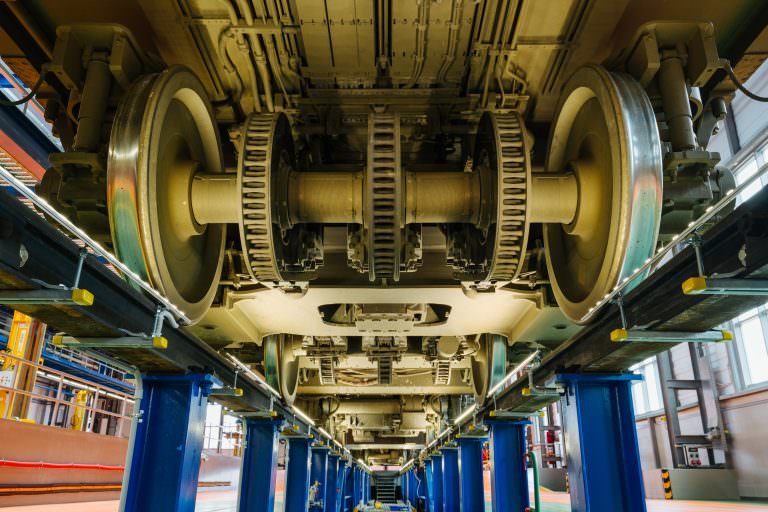
Benefits of Predictive Maintenance
Examples from the Industry
- In the airline industry, vibration and acoustic analysis on jet engines has cut unscheduled removals by ~40% (GE Aviation data).
- Automotive plants using predictive maintenance on robotic arms report maintenance cost reductions of 20–30% by replacing joints only when wear indicators rise.
- In power generation, monitoring turbine temperature profiles has reduced forced outages by nearly half (Siemens case studies).
- Across manufacturing, predictive maintenance typically reduces spare parts consumption and labor hours by 10–20%, as service is triggered by measurable degradation, rather than fixed calendars.
According to Deloitte’s research, predictive maintenance can lead to significant operational improvements:
- 35–45% reduction in downtime
- 70–75% elimination of unexpected breakdowns
- 25–30% reduction in maintenance costs
These findings underscore the substantial impact of predictive maintenance strategies in enhancing operational efficiency and reducing unplanned disruptions.
Here are the quick benefits of conventional preventive maintenance and of predictive maintenance solutions, and the role of AI:
General Benefits of Predictive Maintenance
AI-powered predictive maintenance offers numerous advantages that revolutionize practices across industries.
- First, it significantly lowers maintenance costs by enabling proactive measures to address potential equipment failures before they occur. By analyzing data from sensors and monitoring systems, AI algorithms can detect early warning signs of malfunctions. Early detection allows timely interventions to prevent equipment failures and reduces the need for costly emergency repairs.
- Furthermore, AI-powered predictive maintenance helps extend the product’s lifecycle. By addressing issues promptly and preventing unnecessary strain on equipment, predictive maintenance reduces the frequency of replacements, machine downtime, and capital expenditures, thereby maximizing an organization’s return on investment.
- AI-driven predictive maintenance improves operational efficiency by optimizing maintenance schedules and resource allocation. Analyzing real-time data and predictive analytics allows AI algorithms to prioritize tasks and allocate resources more effectively. Maintenance teams achieve more with fewer resources: labor costs are reduced, and service technicians’ productivity increases!
Customer satisfaction will continue to increase with a better product and service experience, a dramatic reduction in unplanned downtime, and other improvements in our daily lives.
Data Analytics for Predictive Maintenance - Key Applications
Data analytics is the core of predictive maintenance tasks. It transforms raw sensor streams and maintenance logs into actionable insights, enabling organizations to anticipate failures rather than react to them.
Key applications include:
- Data Integration: Combining sensor data (vibration, temperature, pressure, current draw) with historical logs (failures, repairs, operating hours) to build a comprehensive view of asset performance and health.
- Descriptive Analytics: Using dashboards and statistical summaries to highlight abnormal operating patterns and trends.
- Diagnostic Analytics: Identifying the root cause of anomalies, such as misalignment, lubrication failure, or overheating.
- Predictive Modeling: Applying algorithms like regression, survival analysis, anomaly detection, or neural networks to estimate time-to-failure or probability of breakdown.
- Prescriptive Analytics: Suggesting maintenance actions (e.g., replace bearing, adjust alignment) and optimizing scheduling to minimize disruption.
- Continuous Feedback: Incorporating real maintenance outcomes into models so they become more accurate over time based on evaluation metrics.
- Edge and Cloud Processing: Running lightweight anomaly detection at the machine level (edge) while using cloud platforms for heavy analytics and fleet-wide comparisons.
- Visualization & Alerts: Translating model outputs into intuitive dashboards and automated notifications for technicians and planners.
Maintenance, Data Collection, and Elaboration
Predictive maintenance relies on turning operational data into actionable insights. By systematically collecting and analyzing machine performance and environmental information, organizations can anticipate failures, optimize maintenance schedules, and reduce unplanned, costly downtime.
1. Maintenance and Operational Context
Predictive maintenance begins with the operational environment, including machines, processes, and their typical failure modes. Understanding what needs to be monitored (bearings, motors, turbines, conveyors) defines the scope of data collection and the value of prediction.
2. Data Collection
Data is collected from multiple sources, including sensors that track vibration, temperature, pressure, and power consumption, as well as historical logs of repairs and operating conditions. Collecting consistent, high-quality datasets is the foundation for any reliable predictive model.
3. Data Processing and Modeling
Once gathered, data is processed with statistical analysis, machine learning, advanced predictive engineering analytics such as FEA or CFD, and visualization tools to reveal patterns, detect anomalies, and forecast failures. The resulting predictive models are often embedded in software platforms, providing maintenance teams with actionable insights without requiring deep data science expertise.
What is Machine Learning?
Machine learning is a branch of computer science that develops algorithms capable of identifying patterns, correlations, and trends in large datasets without being explicitly programmed for each rule. For engineers, Machine Learning techniques are a way to “teach” software to recognize normal and abnormal behavior of machines by analyzing data from sensors, operational logs, and historical maintenance records.

In predictive maintenance, Machine Learning transforms raw operational data into actionable insights, allowing maintenance teams to anticipate failures rather than react to breakdowns. By continuously learning from new data, Machine Learning models adapt to changes in equipment behavior and improve prediction accuracy over time.
Key Applications of Machine Learning in Predictive Maintenance
- Anomaly Detection: Machine Learning algorithms can automatically detect deviations from normal operating conditions, such as unusual vibration frequencies, temperature spikes, or irregular current draw, which may indicate early-stage faults.
- Failure Prediction: Using historical and real-time sensor data, models can estimate the remaining useful life (RUL) of components, enabling maintenance to be scheduled just-in-time rather than at fixed intervals.
- Pattern Recognition: Machine Learning can uncover complex correlations between operating conditions and failure modes that are difficult to identify with traditional statistical methods. For example, subtle interactions between load, temperature, and vibration can signal bearing fatigue before it becomes critical.
- Optimized Maintenance Scheduling: By integrating predictions with operational priorities, Machine Learning helps determine the best timing for interventions, balancing downtime, resource allocation, and repair costs.
- Continuous Improvement: As models receive feedback from actual maintenance outcomes, they refine their predictions, making future forecasts more precise and reducing false positives.
Deploying Machine Learning for Predictive Maintenance
After understanding how Machine Learning supports predictive maintenance, the next step is putting models into operation.
- Deployment begins with asset selection: prioritizing machines where Machine Learning predictions can have the highest impact, such as turbines, compressors, or robotic arms.
- Data from sensors (vibration, temperature, current, acoustic signals) and historical maintenance logs is preprocessed to remove noise, handle missing values, and engineer features that highlight relevant patterns. This step is crucial, as the quality of the input data directly impacts model performance.
- Next, Machine Learning models are trained and validated using historical and live data. Techniques range from regression and anomaly detection to neural networks, chosen based on the complexity of the equipment and the type of failures being predicted. Pilot projects allow tuning of thresholds, evaluation of prediction accuracy, and assessment of actionable insights.
- Once deployed, models operate in real-time, flagging anomalies and estimating the remaining useful life of the asset. Continuous feedback from actual maintenance outcomes is used to retrain models, improving reliability and reducing false positives. Explore here the field of Design for Reliability (DFR).
- Finally, successful Machine Learning deployment requires integration with maintenance workflows, ensuring predictions translate into timely, practical interventions that prevent unplanned downtime and optimize resource allocation.

How Does AI Learn?
Machines can learn in different ways, mainly through supervised, unsupervised, and reinforcement learning:
- Supervised learning is a machine learning approach in which models are trained using labeled datasets, meaning that each input is paired with a known output.
- In predictive maintenance, this often involves historical operational data where sensor readings, operating conditions, and past failures are annotated. 3D Convolutional Neural network algorithms, regression models, or tree-based algorithms learn to associate patterns in input features (such as temperature fluctuations, vibration frequencies, or pressure variations) with specific outcomes, like component failure or remaining useful life.
- Once trained, these models can predict failure probabilities for new, unseen equipment data, enabling proactive maintenance interventions and minimizing unplanned downtime.
- Supervised learning is particularly effective when there is a substantial record of labeled failure events, allowing models to generalize patterns across similar equipment.

- Unsupervised learning, by contrast, works with unlabeled data and seeks to identify intrinsic structures or hidden patterns within datasets.
- In predictive maintenance, unsupervised algorithms analyze operational sensor data to detect clusters of normal behavior or identify outliers and anomalies that may indicate early signs of degradation.
- Techniques such as clustering, principal component analysis, and autoencoders are commonly used.
- For example, unusual vibration signatures in a motor may not match any previously observed failure pattern but could signal emerging faults. By revealing deviations from established operational baselines, unsupervised learning allows maintenance teams to discover previously unknown failure modes and intervene before a critical breakdown occurs.
- Reinforcement learning takes a fundamentally different approach: it trains an agent to interact with its environment and learn optimal actions through trial and error.
- In the context of predictive maintenance, reinforcement learning can be applied to optimize scheduling strategies, resource allocation, and operational decisions that affect equipment longevity. The agent receives feedback in the form of rewards or penalties based on the outcomes of its action; for example, minimizing downtime or maintenance costs.
- Over time, the system learns policies that maximize equipment reliability while balancing operational constraints.
- This approach is especially valuable in complex industrial systems where maintenance decisions involve multiple interdependent machines, limited resources, and dynamic operating conditions.
Explore the significant fields of Artificial Intelligence.
Equipment Reliability and Equipment Maintenance
Predictive maintenance links reliability of equipment directly to how information is monitored and acted upon. Instead of treating reliability as an abstract goal, it becomes measurable through data. The following points illustrate how predictive maintenance transforms monitoring into actionable steps that enhance reliability and improve overall system performance.
In short:
Predictive Maintenance and Equipment Failure
Equipment failure rarely happens without warning. Long before a breakdown, machines often exhibit measurable deviations from regular operation. Predictive maintenance targets these deviations to identify failure in advance.
Failure can result from overheating, excessive vibration, fluid leaks, or material wear. Sensors capture these changes continuously. When temperature rises above tolerance, when vibration frequencies shift, or when pressure levels fall, the system is already signaling degradation. Ignoring these signals accelerates failure until the machine stops or causes damage to itself.
- Machine learning algorithms process this sensor data to isolate patterns that correlate with known failure modes. For example, a specific vibration signature can indicate bearing fatigue, while a pressure drop might signal seal failure. Detecting these conditions early prevents escalation from a minor defect to a complete equipment shutdown.
- Condition-based monitoring replaces rigid service intervals with failure-driven triggers. Instead of assuming a component will last a fixed number of hours, the system intervenes only when data shows the onset of failure. Condition-based monitoring avoids both premature replacement and catastrophic downtime. With simulation-driven design, organizations can reduce reliance on expensive cycles of physical prototyping and testing.
- Predictive maintenance is therefore less about routine service and more about recognizing the precursors of failure and acting before they cascade into system-wide stoppages.
Choosing the Right Strategy - Preventive Maintenance or Predictive Maintenance?
The choice between preventive and predictive maintenance depends on factors like the asset’s criticality and the availability of data and resources.
Preventive and predictive maintenance are two proactive strategies organizations can use to further equipment effectiveness.
Combining predictive maintenance strategy with conventional preventive or reactive maintenance can allow organizations to leverage the benefits of maintenance services while minimizing the drawbacks of each approach.

What is the Role of Data Scientists in Predictive Maintenance?
The role of data scientists in predictive maintenance is to strive for accurate predictions based on datasets collected during operations and to integrate any new data into a working predictive model rather than working on practical predictive maintenance issues. The first stage for data scientists is collecting information.
The Role of Data Scientists in Collecting and Managing Information
- Data scientists (AI/ML specialists) are central to predictive maintenance programs because they transform raw machine data into actionable insights. Their role begins with collecting information from sensors that track temperature, vibration, fluid levels, and other performance indicators. They ensure data quality, handle missing or inconsistent records, and integrate information from multiple sources.
- Beyond collection, AI/ML specialists manage how information is stored and structured, making it accessible for analysis and interpretation. They design pipelines that clean, normalize, and organize the data so it can reliably feed predictive models.
- With this foundation, AI/ML specialists develop and refine algorithms that identify patterns associated with equipment degradation. Their models highlight early warning signs of failure and support decisions on when intervention is required.
- By focusing on information collection and management, AI/ML specialists enable organizations to shift from reactive maintenance to predictive strategies, reducing unplanned downtime and unnecessary service.
Data Quality and Predictive Maintenance Programs
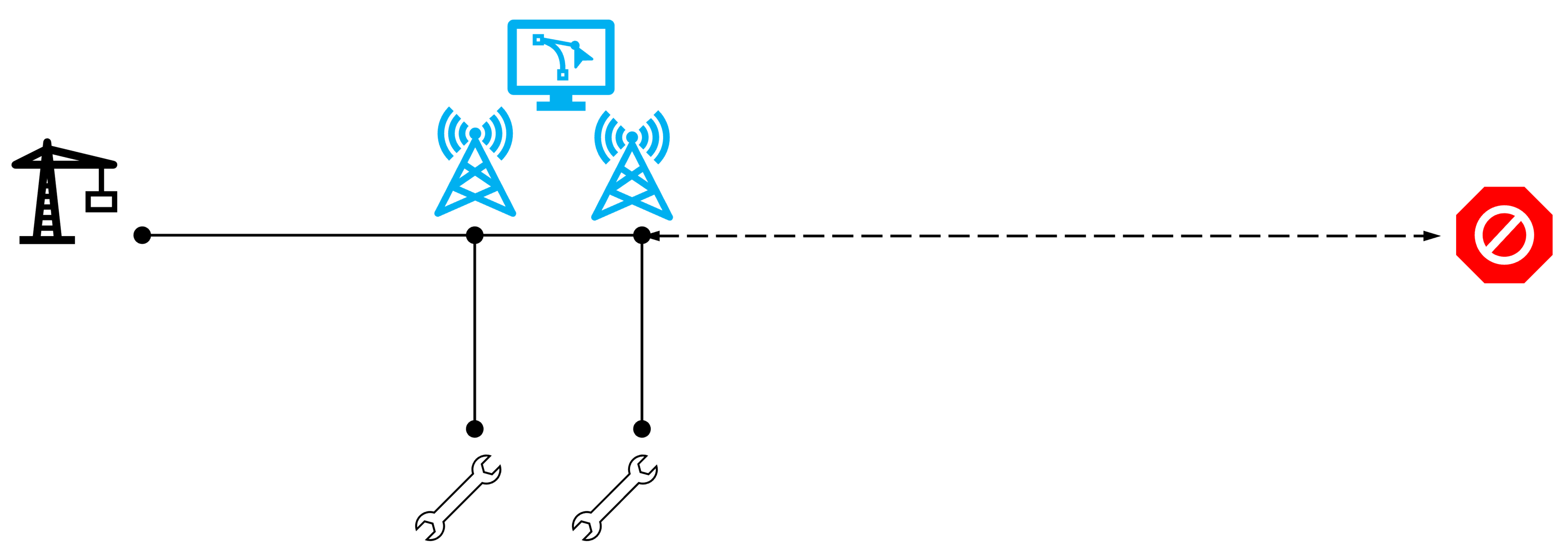
Implementation of Predictive Maintenance
Implementing predictive maintenance requires a structured approach that involves collecting, analyzing, and developing models based on data.
Key aspects of implementation include planning and executing maintenance actions :
- Data Acquisition and Preparation
- Gathering and cleaning relevant data from various sources is crucial for training practical models.
- Model Selection and Training
- Choosing the right machine learning algorithms (supervised learning, anomaly detection, etc.) and training them with historical data. Explore how Deep Learning can be efficiently trained on the Cloud.
- Real-time Monitoring and Alerting
- Establish systems to continuously monitor sensor data and trigger alerts when potential issues are detected.
- Integration with Maintenance Processes
- Integrate predictive maintenance models into existing workflows and ensure personnel can act on the insights.
- Change Management
- The successful adoption of predictive maintenance requires a change management framework that includes a clear assignment of roles and responsibilities, updated maintenance procedures and checklists, and continuous feedback loops to track model performance and operational impact.
Preventative Maintenance
Prevent(at)ive methods involve regularly scheduled inspections, repairs, and replacements of equipment components to prevent equipment failure. The preventive approach relies on historical data and manufacturer recommendations to determine intervention intervals and tasks. For example, daily preventive maintenance tasks include changing oil filters in vehicles at scheduled mileage intervals and inspecting machinery for signs of wear and tear on a monthly basis.
Preventive maintenance aims to identify and address issues early, minimizing the risk of unexpected breakdowns and optimizing asset reliability and lifespan. However, it may not always be the most efficient approach to preventing machine failure: over-maintenance can lead to unnecessary downtime and expenses, while under-maintenance can result in missed opportunities to prevent failure.
What are the Three Approaches to Maintenance Management?
The three main distinct approaches are reactive, preventive, and predictive.
- The reactive or after-the-fact corrective approach (corrective maintenance) is a sort of “unintelligent feedback” that reacts to breakdowns as they occur. We can imagine them suited for low-cost, non-critical assets that don’t pose safety or operational risks in the event of failure. Reactive maintenance means “fixing it” when a breakdown occurs.
- A preventive approach is based on knowledge of the system and involves scheduling maintenance to minimize the likelihood of component or system failure for as long as possible.
- A predictive approach involves using real-time data and analytics to predict equipment failures before they occur. Sensors track key parameters such as vibration, temperature, or pressure; data models detect anomalies that signal degradation; and maintenance is performed only when evidence shows that a fault is developing.
Summary of maintenance management strategies with pros and cons:
Best Practices for Predictive Maintenance
Effective predictive maintenance extends beyond the installation of sensors.
It requires a structured approach to collecting, managing, and acting on data.
The following practices show how organizations can transform raw signals into reliable insights, preventing equipment failure and optimizing maintenance efforts.
Due to the complexity, many organizations depend on collaborations with technical vendors to implement scalable predictive maintenance. For example, a manufacturing plant might partner with Siemens or GE Digital to integrate IoT sensors, edge computing, and AI-driven analytics across its production lines.
Some companies deploy Predictive Maintenance as a Service (PMaaS), leveraging cloud infrastructures to deliver analytics without requiring in-house platforms. For instance, Oracle provides predictive maintenance solutions that help companies minimize unplanned downtime and optimize maintenance costs through real-time insights.
Examples of Artificial Intelligence in Predictive Maintenance
We will explore practical applications of predictive maintenance Artificial Intelligence in two domains:
(1) logistics and fleet management
and
(2) energy grids, highlighting how Artificial Intelligence helps anticipate failures, optimize operations, and reduce downtime

Example (1): Logistics and Fleet Management
Overseeing and coordinating a fleet of vehicles, such as trucks or ships, ensures efficient operations and maximizes productivity. Artificial Intelligence technologies provide real-time insights into vehicle performance, driver behavior, and operational process logistics.
AI utilizes onboard sensors, GPS devices, and telematics data to monitor vehicle health and location, as well as analyze driver behavior. Machine learning algorithms identify patterns and trends within data, enabling fleet managers to make informed, data-driven decisions that optimize their operations.
For example, artificial intelligence algorithms can predict when vehicles are due for maintenance based on existing data on mileage, engine diagnostics, and historical records.
Predicting Component Failures
Predictive maintenance is revolutionizing fleet operations by enabling proactive management of vehicle health. In commercial trucking, components like brake systems are critical to safety and performance. AI-powered predictive maintenance systems analyze data from sensors monitoring parameters such as temperature, vibration, and fluid levels to predict equipment failures by detecting early signs of potential failures. The approach enables fleet managers to schedule maintenance based on actual wear patterns, rather than arbitrary intervals, thereby reducing downtime and repair costs.
- Case Study: FleetDynamics Corporation
- FleetDynamics Corporation, operating 1,500 commercial vehicles across diverse terrains and climates, faced escalating brake maintenance costs and safety concerns due to unpredictable brake pad wear patterns. Traditional time-based maintenance schedules led to premature replacements and unexpected failures, resulting in annual costs of $4.2 million.
- By implementing digital twin technology with AI-powered predictive analytics, FleetDynamics transformed reactive brake maintenance into a precise predictive science. The shift led to significant improvements in safety, cost efficiency, and fleet availability, demonstrating the tangible benefits of AI in predictive maintenance.
Example (2) - Energy Grids and the Role of Predictive Maintenance AI
Energy grids are complex networks that transmit electricity from generation plants to end users, encompassing generators, transformers, substations, and transmission lines. Their continuous operation is critical for modern society, and any disruption can have widespread consequences.
- In this context, risk refers to the probability of component failures or operational disruptions combined with the potential impact on power delivery, safety, and economic stability.
- AI-based predictive maintenance can mitigate risks by analyzing data from smart meters, sensors, weather forecasts, and energy consumption patterns.
- By detecting early signs of equipment degradation or abnormal load conditions, AI algorithms allow grid operators to schedule maintenance proactively, prevent unplanned outages, and optimize the balance between electricity supply and demand.
This approach not only enhances reliability but also reduces financial losses and the societal impact of power disruptions.
Preventing Unplanned Outages
AI-based risk assessment tools can analyze historical data to identify areas susceptible to failures that are at high risk. By prioritizing maintenance and upgrades for critical assets, energy companies can reduce the likelihood of unplanned outages. AI-based prediction systems analyze data collected from sensors to detect early warning signs of potential failures, such as equipment overheating or voltage fluctuations, and alert maintenance teams.
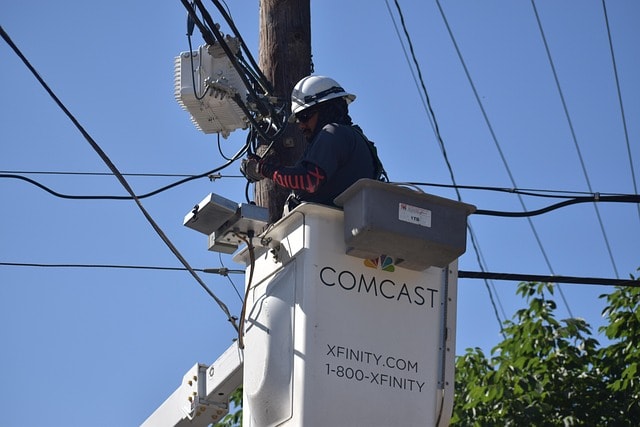
Conclusions
The integration of Artificial Intelligence into predictive maintenance changes how organizations manage industrial assets. By continuously collecting and analyzing sensor data (such as vibration, temperature, pressure, acoustic signals, and operational metrics) AI enables early detection of failures, proactive interventions, and optimized maintenance schedules. This approach reduces downtime, extends equipment lifespan, and improves overall operational efficiency.
Advanced machine learning models, including regression, anomaly detection, and neural networks, enhance prediction accuracy. Real-time dashboards and feedback loops allow systems to learn from outcomes and adapt over time.
Implementing predictive maintenance presents several challenges, including imbalanced datasets, sensor noise, missing data, and model degradation. Integration with legacy systems, real-time processing requirements, and edge device limitations adds complexity. Data privacy and security are critical, as sensitive operational information is involved, requiring robust governance and encryption.
Emerging technologies, such as AR, VR, and Digital Twins, can support more timely and precise maintenance interventions.
FAQ
How to Use Python for Predictive Maintenance in Manufacturing?
Python collects, cleans, and analyzes sensor data like vibration, temperature, or pressure. Pandas, NumPy, scikit-learn, TensorFlow, and PyTorch support modeling, while matplotlib or seaborn are used to visualize trends.
Which AI Technique Is Most Suitable for Predictive Maintenance in Automation?
Machine learning is the most common. Supervised learning predicts failures using labeled data, unsupervised learning detects anomalies or patterns without labels, and reinforcement learning can optimize maintenance schedules. The best technique depends on the availability of data, the type of equipment, and the specific prediction needs.
What Machine Learning Algorithms Are Used for Predictive Maintenance?
Regression estimates remaining useful life, classification predicts potential failures, and tree-based models handle complex sensor relationships. Neural networks, especially RNNs, process sequential time-series data. Anomaly detection with isolation forests or autoencoders identifies unusual behavior early.
How Do Supervised and Unsupervised Learning Compare in Predictive Maintenance?
Supervised learning uses labeled data for precise failure predictions, while unsupervised learning identifies anomalies or patterns without labels, spotting unexpected issues. Combining both maximizes detection accuracy, reduces unplanned downtime, and leverages historical data alongside real-time monitoring.
What Is the Cost-Benefit of Implementing Predictive Maintenance with Machine Learning?
Costs include sensors, software, storage, and expertise. Benefits are reduced downtime, fewer emergency repairs, optimized maintenance, and extended asset life. Predictive maintenance can cut maintenance costs by 20–40% and downtime by 30–50%, making it financially worthwhile for critical or high-value equipment.
How Can the Accuracy of Machine Learning Models for Predictive Maintenance Be Evaluated?
Accuracy is measured by comparing predictions with actual outcomes. Supervised models use precision, recall, F1-score, or MAE; unsupervised models rely on historical failures or expert validation. Techniques like cross-validation, confusion matrices, and ROC curves prevent overfitting and ensure continuous model reliability.
What Are the Data Requirements for Predictive Maintenance Using Machine Learning?
High-quality sensor and operational data are needed, including vibration, temperature, pressure, and historical failure logs. Data must be consistent, complete, and well-sampled. Combining historical and real-time data improves model accuracy, and proper storage and integration facilitate the effective analysis of equipment behavior.
What Challenges and Limitations Exist When Using Machine Learning for Predictive Maintenance?
Challenges include poor data quality, limited failure records, complex model interpretability, system integration, and cost/expertise requirements. Continuous monitoring, careful planning, pilot testing, and vendor collaboration help mitigate risks and enable the successful deployment of predictive maintenance.
What Are the Common Time Series Anomaly Detection Techniques Used in Predictive Maintenance?
Statistical methods such as moving averages, exponential smoothing, and ARIMA identify deviations. Machine learning techniques include isolation forests, one-class SVMs, and autoencoders. RNNs and LSTMs detect sequential patterns, while seasonal-trend decomposition and rolling windows find subtle anomalies.

